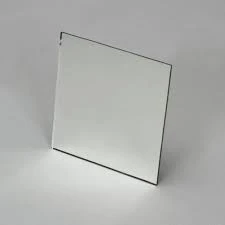

The Allure of Clear Reflective Glass
Clear reflective glass has emerged as a favored material in modern architecture and design, captivating the world with its unique blend of aesthetics and functionality. It is a versatile component that enhances the beauty of both residential and commercial spaces while providing practical benefits that cannot be overlooked.
One of the most striking characteristics of clear reflective glass is its ability to create a sense of openness and lightness in any environment. By allowing natural light to permeate spaces, it contributes significantly to the ambiance of a room. The reflective properties of the glass serve to amplify this effect, bouncing light around and creating a brighter, more inviting atmosphere. This quality not only reduces the need for artificial lighting during the day but also fosters a connection with the outdoors, blurring the lines between inside and outside spaces.
In urban settings, the architectural use of clear reflective glass can transform the skyline. Buildings adorned with this material often exude a contemporary appeal, catching the eye of passersby as they shimmer in the sunlight. The reflection of cityscapes in the glass surfaces can create stunning visual effects that change throughout the day, offering a dynamic art piece as nature and civilization interact. This transformative power is not just limited to beauty; it can also enhance energy efficiency by minimizing solar heat gain while maximizing daylight entry.

Moreover, clear reflective glass provides significant privacy without sacrificing visibility. When viewed from the outside during the day, it allows those within to see out while preventing those outside from easily seeing in. This feature is particularly advantageous for office buildings and residential spaces situated in high-density areas, as it combines security with openness.
However, the use of clear reflective glass is not without its challenges. Designers must consider its potential for glare and heat build-up, which can affect the comfort of occupants and nearby pedestrians. Additionally, the maintenance of spotless reflective surfaces demands diligence, as fingerprints, dust, and smudges can disrupt the sleek appearance that defines this material.
In conclusion, clear reflective glass is more than merely a building material; it is a transformative element that shapes our environments. Its aesthetic appeal, combined with practical benefits such as energy efficiency, privacy, and the enhancement of natural light, positions it as a cornerstone of contemporary design. As architects and designers continue to innovate, clear reflective glass will undoubtedly remain at the forefront, reflecting the world around us in ever-evolving ways.